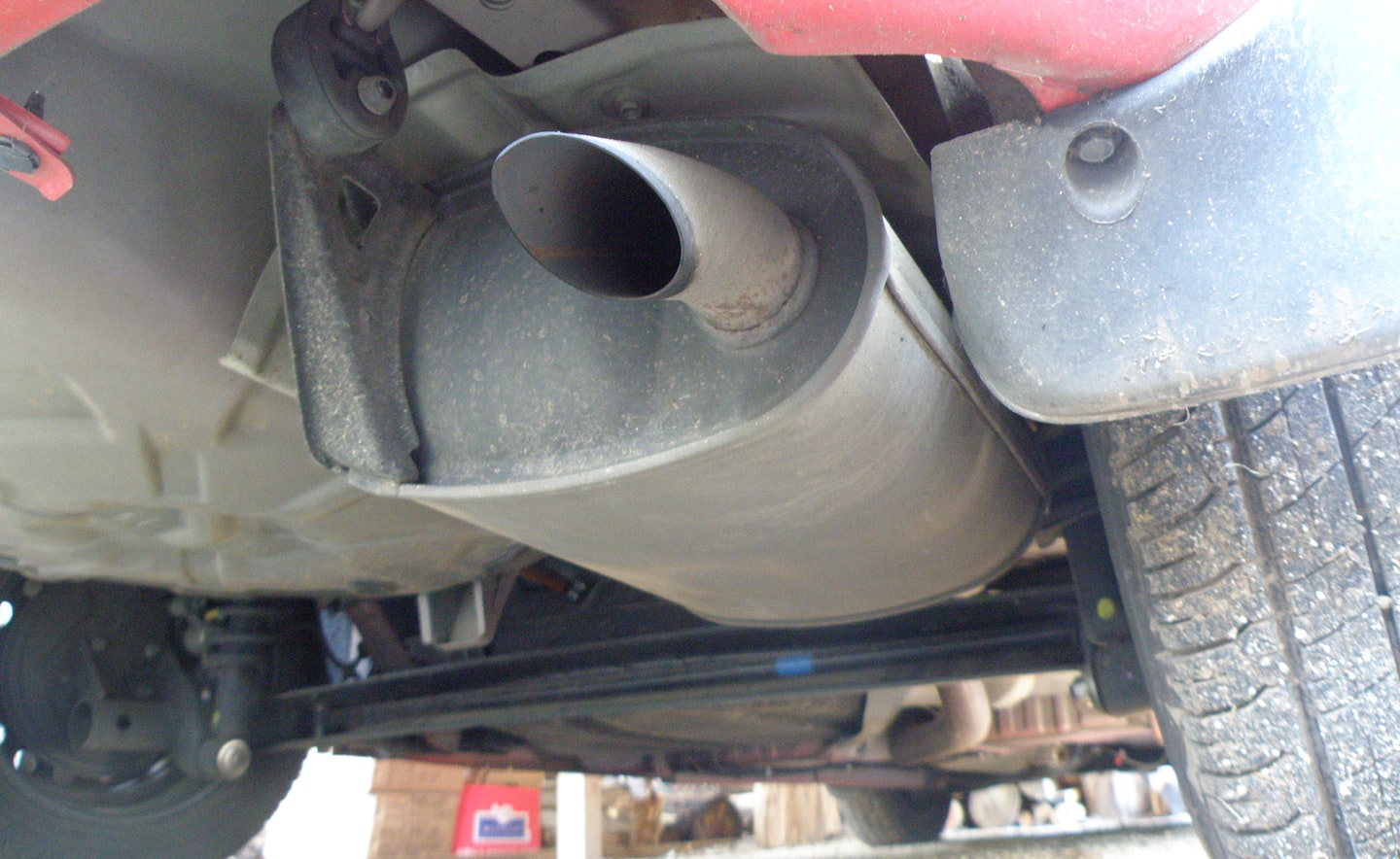Within the jumble of pipes and metal underneath your car sits a vital component: the catalytic converter. First introduced in the 1970s, catalytic converters – also referred to as 'cats' – are designed to convert and reduce the pollutants and toxic gas your vehicle produces when you're driving.
The Environmental Protection Agency considers the automotive catalytic converter one of the greatest environmental inventions of all time. This piece of essential equipment relies on a chemical reaction between your vehicle's exhaust gases and a trio of precious metals (platinum, rhodium and palladium), making this part of your car attractive to thieves. Since 2020, claims of catalytic converter thefts have increased by nearly 300 percent, according to the National Insurance Crime Bureau.
In just a few minutes, someone can cut off your converter and sell it to a scrap yard, leaving you with a large hole under the car plus a huge bill to replace this part – up to $2,000 for some vehicle models.
Here's how a catalytic converter works and some tips to foil thieves from stealing it.

Catalytic converter cross section | Getty
What does a catalytic converter do?
Located between your exhaust manifold and muffler, catalytic converters are mandatory on all street-legal cars. Being so close to the engine helps catalytic converters warm up quickly – they start working at around 500 degrees Fahrenheit. This anti-pollution device looks like a small muffler and is usually oblong or cylindrical. Its job? To clean up environmentally harmful gases emitted from your engine – such as hydrocarbons, nitrogen oxides and carbon monoxide – by transforming them into less noxious compounds like water vapor, nitrogen and carbon dioxide.
Usually, there's a piece of honeycomb-shaped ceramic inside the catalytic converter, and it's coated with precious metals. These metals are the catalysts that kick-start a complex chemical reaction. When toxic exhaust gases enter the catalytic converter, they pass through the honeycomb, where the heat and metals convert them into safer emissions through chemistry. Catalytic converters can reduce up to 90% of your car's hazardous tailpipe emissions, and the component typically lasts about 10 years.
Unless it's stolen from your car.
Why are catalytic converters being stolen?
Catalytic converter theft has surged over the past few years, particularly since March 2020. Why? The prices and demand for the precious metals inside these devices have skyrocketed since the COVID-19 pandemic cut production of these metals at overseas mines. As more countries push for stricter emissions standards, the catalytic converter market is growing steadily. The disrupted supply chain for the precious metals means both demand and costs rose dramatically due to limited supply. These precious metals are worth more than gold, platinum being the least expensive precious metal in a cat, motivating thieves to steal catalytic converters for quick cash.
It takes just a few minutes to crawl under your car and saw off the catalytic converter, which can then fetch up to $800 each or more on the black market, depending on the make and model. Unscrupulous scrap yard dealers or other buyers can then sell these devices to recycling facilities to reclaim the precious metals inside.
If you own a Toyota Prius, your vehicle tops thieves' most-wanted list: the converters in this model contain more precious metals and are considered more valuable. Trucks and SUVs are also prime targets because they're raised off the ground, making it even easier for thieves to slip underneath and swipe your device.

Looking underneath | Ryan McGuire
How can you tell if your catalytic converter was stolen?
Technically, your car can function without a catalytic converter, but you're not legally allowed to drive it if it's gone. You'll know immediately if your device was stolen if the car makes a very loud sound when you start it. That's because there's now an 18-inch gap in the exhaust system, so the gases can't make it to your muffler. Also, your check engine light is going to come on, either immediately after you start the car or after the computer has had a chance to run its system checks and sees the parameters are off.
What to do if your device is stolen
Follow these steps as soon as you discover your catalytic converter has been stolen.
Call the Authorities
You may need a police report to make an insurance claim.
Contact Your Insurance Company
The average cost to purchase a new catalytic converter ranges between $1,800 and $2,000, depending on the type of car you own. And while many insurance policies cover part or most of that cost, you're on the hook for the deductible, plus your car will be undrivable for days or weeks while you wait for a replacement part to be fitted.
See a Mechanic
A professional technician can discuss your installation and repair options. Or, you can replace it yourself, saving hundreds of dollars in labor costs.
Can you prevent catalytic converter theft?
You can make it more difficult for thieves to snatch your catalytic converter with these measures:
• Always park in your garage or a brightly-lit area, ideally in view of a security camera. At home, put in a motion sensor light that covers your driveway.
• Install an anti-theft device that makes it impossible to cut off your catalytic converter. Several manufacturers sell shields, cables or plates that are bolted onto your car to cover the component.
• Spray paint the cat a bright color with high-temperature exhaust manifold paint, which should alert the recycler that this cat is stolen.
• Etch your license plate or vehicle identification number (VIN) on the converter so it's easier to track if stolen.
Your catalytic converter has an important job to do, so preventing it from being stolen will save you time, money and headaches.
Was your catalytic converter stolen? Share your experience with us in the comments below.








